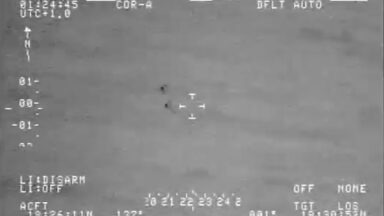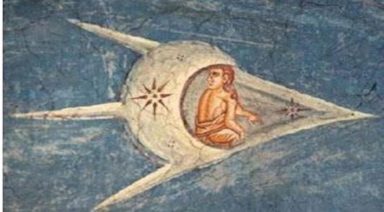Gematria: Understanding the Numerical System that Decodes the Divine

Have you ever thought that numbers might tell stories just like words do? Gematria, a fascinating form of numerology found in Kabbalistic teachings, suggests that there’s a deep connection between numbers and words.
This ancient method, deeply rooted in sacred texts, proposes that every letter and word carries a numerical value that unveils deeper meanings. These connections might even offer clues to understanding both historical and future events through sacred texts like the Torah.
The concept of gematria numerology stems from the idea that mathematics is the universal language of nature and within it may be the keys to explaining our universe or evidence of supernatural power. Marty Leeds has taken this concept of the Kabbalistic gematria and applied it to the English language, believing that he has found a cipher in our alphabet to prove this theory.
What is Gematria?
Gematria is a numerological system where each letter of the Hebrew alphabet is assigned a specific numerical value. This system is used to interpret the hidden meanings within words, names, or phrases, based on the belief that God created the universe through the numerical values of Hebrew letters.
This practice, deeply rooted in the mystical aspects of the Hebrew Bible and embraced within Kabbalistic traditions, transcends simple word-to-number correspondences. It serves as a profound tool to explore the divine blueprint encoded within sacred texts, suggesting that every letter and word carries an intrinsic numerical value that reveals deeper, spiritual insights.
Modern scholars, including Marty Leeds, have extended the principles of gematria beyond Hebrew to the English language, proposing that these numerical ciphers uncover universal truths and mystical insights across different languages and cultures.
How Does Gematria Work?
The idea behind gematria numerology is that mathematics is a universal language, which might hold the keys to explaining our universe or even pointing to the existence of supernatural powers. In the practice of gematria, each Hebrew letter’s numerical value allows scholars and mystics to draw connections between words and uncover deeper meanings. These numerical values can also reflect broader concepts and beliefs. For instance:
- Number 888: In Christian numerology, the number 888 represents Jesus, or more specifically Christ the Redeemer. This comes from the fact that in Greek gematria, the letters of Jesus’ name add up to 888. This number is seen as a representation of infinite love and redemption.
- Number 666: Often recognized as the number of the beast from the Book of Revelation in the New Testament, 666 is associated with evil and Satan in popular culture. However, in the context of gematria, this number can have more complex interpretations depending on the scriptural and cultural context.
- Number 4: The number 4 is often seen as a symbol of stability and order in many cultures. In the context of gematria, it can represent the four elements (earth, water, air, fire), the four cardinal directions, or the foundational aspects of creation. This reflects its universal significance in forming the basis of the world’s structure.
- Number 33: This is a number with significant importance in Freemasonry where it signifies the highest degree of the Scottish Rite. In Kabbalistic tradition, it can represent the age at which Jesus was crucified and, by extension, a period of accomplishment or completion.
For example, the tzitzit, a shawl worn during Jewish ceremonies, provides a perfect illustration: the numerical value of its knots and strands adds up to 613, which intriguingly corresponds to the total number of commandments in the Torah. These numerical associations are believed to hold deeper spiritual or mystical significance, revealing connections that go beyond the surface and delve into the divine or universal truths.
What is Gematria Used For?
Gematria is not just about playing with numbers; it’s a tool embedded in the Kabbalistic tradition to interpret deeper meanings within sacred texts. Scholars use it to uncover insights about life, the divine, and cosmic mysteries. Beyond Judaism, gematria also appears in other cultures and languages, demonstrating its widespread influence and importance in various religious and philosophical traditions.
Exploring the Origins of Gematria
The practice of gematria is believed to have originated in the Jewish mystical tradition known as Kabbalah, but its influences can be traced back even further to ancient Greek and Arabic cultures. The practice was likely influenced by Greek isopsephy and Arabic abjad numerals, which also connect letters with numerical values. These practices highlight a universal quest to find deeper meaning in language and numbers across different cultures and historical periods.
Gematria in Different Cultures
While Hebrew gematria is most prominent, similar numerological practices exist in other cultures such as Greek and Arabic. These systems adapt to the peculiarities of their own languages and scriptures, providing a broad field of study for numerologists worldwide. The Greek system, for example, has been referenced by philosophers like Plato, showing gematria’s influence on early philosophical thought.
Examples of Gematria in Practice
- Biblical Texts and Jewish Tradition: Gematria is often used to interpret the Hebrew Bible. For instance, the Hebrew word for ‘life’ (חי) sums to 18, making it a significant number in Jewish culture.
- Modern Applications by Marty Leeds: Leeds argues that even the English alphabet can be broken down into numbers that reveal hidden codes, blending traditional and contemporary interpretations of gematria.
Kabbalistic Connections
In Kabbalah, gematria is not merely a numerological curiosity; it is an essential tool for exploring the esoteric and mystical dimensions of Hebrew scriptures. This practice is particularly valuable for interpreting the hidden meanings behind the names of God, such as the Tetragrammaton (YHWH) and other sacred words.
Kabbalists believe that each letter in these divine names carries specific numerical values that are direct expressions of cosmic energy and divine attributes. By decoding these numbers, mystics can gain insights into the fundamental structures of existence and the inner workings of the cosmos.
The use of gematria in Kabbalistic studies is seen as a method of interpretation and a form of meditation and spiritual practice, aimed at bringing practitioners closer to divine wisdom.
Key Aspects of Kabbalistic Gematria:
- Interpretation of divine names and cosmic energy
- Insights into the fundamental structures of existence
- Meditation and spiritual practice to connect with divine wisdom
Practical Uses of Gematria Today
While its roots are ancient, gematria has evolved to meet the needs of modern society. Today, it finds applications in various personal and practical contexts:
- Event Planning: Individuals use gematria to select auspicious dates for significant events, such as weddings or business openings. Aligning activities with favorable numerical values is believed to influence outcomes positively.
- Personal Insight: Gematria is used to analyze personal names, birth dates, and keywords, helping individuals uncover deeper spiritual meanings and potential life paths.
- Creative Applications: Artists and writers often use gematria to structure their works around specific numerical themes, adding a layer of symbolic significance to their creative outputs.
- Digital Accessibility: In the digital age, the principles of gematria have been adapted for online use, making this ancient wisdom accessible globally and allowing its exploration across different languages and cultures.
The Ongoing Relevance of Gematria
Gematria’s roots stretch deep into Kabbalistic mysticism and have branched out into modern linguistic studies. It remains a vital tool in the study of sacred texts and offers a unique perspective on the numerical patterns that many believe govern the universe. Whether used for spiritual discovery, theological study, or philosophical exploration, gematria captivates those who seek to understand the intersection of numbers and words in various cultures.
Gematria FAQs
How do you calculate words using gematria?
Calculating a word’s gematria value involves adding up the numerical values of each letter in the word. Different traditions may have their own set of values and methods, adding a layer of complexity to the calculations.
What is a Gematria Calculator?
A Gematria calculator is a digital tool that simplifies these calculations, allowing users to quickly find the numerical value of words and phrases across different Gematria systems.
How does gematria work in the Hebrew language?
In Hebrew, each letter is assigned a numerical value, and these numbers are used to explore relationships and uncover deeper symbolic meanings between words, based on their numerical equivalence.
Achieving Modern Enlightenment With Gurdjieff's Fourth Way

Around the turn of the 20th century, the mysticism movement aimed to bridge the gap between western and eastern philosophies with theosophy, esotericism, and a burgeoning interest in the occult. This spiritual zeitgeist inspired George Gurdjieff to develop the Fourth Way; exercises that can be incorporated into one’s daily life to remove yourself from a state of hypnotic waking sleep.
The Fourth Way: Hindu, Sufi, And Christian Esotericism
Deeply devoted spiritual practices often focus on either a detachment from the physical or a strict dominance over it. Georges Gurdjieff did not see these attempts to embrace a higher self as practical, believing instead that enlightenment could be achieved without asceticism.
Born in 1866 in Alexandropol, Armenia, Gurdjieff was inspired by the theosophical movement and decided to travel to Central Asia and the Middle East in search of esoteric spiritual leaders and seekers of truth. Upon his return, he penned a series of books that would become the foundation of his spiritual practice: The Fourth Way. The second book in the series and 1979 film, Meetings with Remarkable Men, detailed his encounters with spiritual leaders on his journey who were more likely fictional characters symbolic of the three “ways” preceding his.
During his travels, he was inspired by the spiritual ways of the fakir, monk, and yogi, though he saw their methods as only successful in achieving a fraction of development, with the more practical roots of their disciplines lost in antiquity. At the same time, he believed that the effects of modern technology and society were entrancing everyone into a hypnotic waking sleep.




































